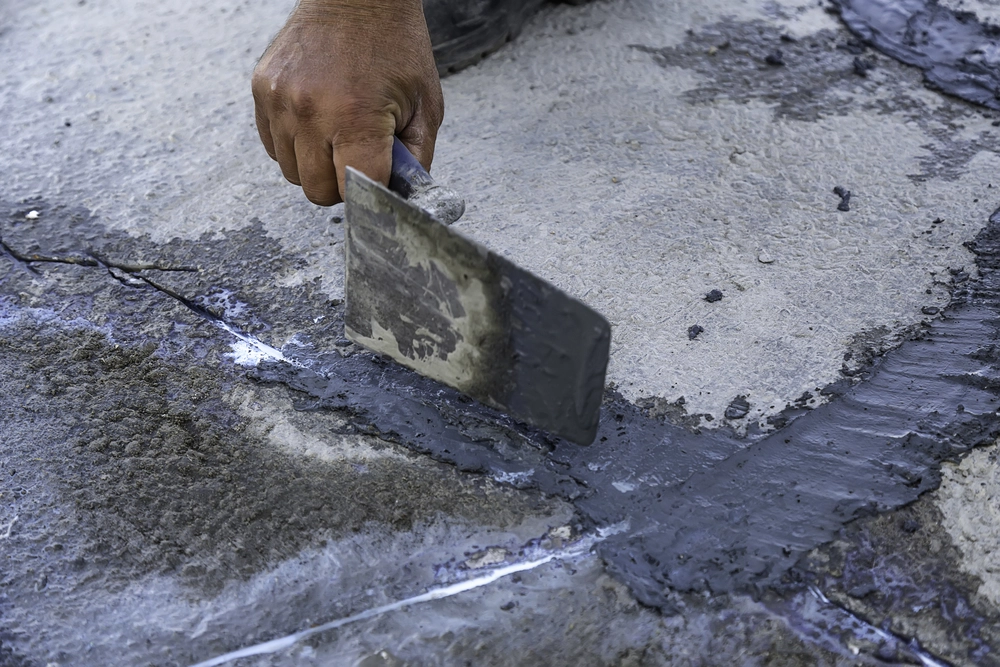Cracking is a frequent occurrence in concrete structures, which can be caused by various factors, including shrinkage during the curing process, thermal expansion and contraction, and loads that exceed the material’s capacity.
It is essential to note that while minor cracking doesn’t typically affect a structure’s integrity, it can lead to issues if not addressed appropriately. At RyanCo Concrete Construction, we prioritize using high-quality materials and employ expert techniques to minimize the occurrence of cracks and ensure the longevity of each project we undertake.
Concrete and Cracking: Understanding the Basics
Cracking in concrete can often be perceived as indicating poor quality or faulty construction. However, it’s a common misconception that must be demystified. Concrete, a composite material made of water, aggregate, and cement, undergoes a hydration process during which it hardens and gains strength. As this process unfolds, volume changes due to drying shrinkage and thermal expansion can occur, potentially leading to cracks.
Types of Cracks
Several types of cracks may appear in concrete structures:
- Hairline Cracks: These are fine, superficial cracks that may not affect the structure’s integrity.
- Plastic Shrinkage Cracks: These occur shortly after the concrete is poured and before it has fully set.
- Settlement Cracks: These can happen when the ground beneath the concrete isn’t compacted and settles over time.
- Structural Cracks: These are larger cracks that could indicate potential structural issues and should be evaluated by a professional.
Each type of crack has its characteristics and causes, and at Ryanco, we take the time to diagnose and address the specific kind of cracking present.
Preventive Measures and Solutions
Prevention is key in minimizing the chances of cracking. We employ industry-leading techniques during the preparation, mixing, pouring, and curing stages to reduce the risk:
- Proper Ground Preparation: Ensuring the ground is well-compacted and level to prevent settlement cracks.
- Control Joints: Implementing planned joints in the concrete to allow for controlled cracking at predetermined locations.
- Proper Curing: Maintaining the correct moisture levels during the curing process to prevent excessive shrinkage.
Despite the best preventive methods, cracks can still appear. Therefore, it’s crucial to understand that not all cracks indicate a structural problem. When they do occur, our team at Ryanco is ready with a range of repair solutions that address the cosmetic issues and fortify the structure’s integrity.
Crack Repair Solutions
Our range of repair services caters to the different types and severities of concrete cracks:
- Sealing: A simple sealant can often resolve the issue of non-structural, minor cracks.
- Epoxy Injections: For cracks that require more substantial repairs, epoxy injections can help restore the concrete’s original strength.
- Stitching: Larger structural cracks might require stitching, a method where we use metal staples to hold the crack together.
Ryanco’s Commitment to Excellence
At Ryanco Concrete Construction, we are committed to upholding the highest standards of craftsmanship and quality. Cuts in concrete can happen, even with the best practices in place, but our dedication to effective solutions and transparent client communication makes us leaders in the industry. We see each project as unique and offer personalized consultations to each client to address concerns and provide the most suitable repair options for their concrete structures.
For our clients, this means not just a responsive repair service but a partner invested in the longevity and durability of their concrete investments. We believe in the strength of our work, and our dedicated team is available to address any concerns regarding cracking or other concrete-related issues.
When it comes to concrete, trust Ryanco Concrete Construction to provide the expertise, services, and peace of mind you deserve. Contact us today to learn more about our crack repair services or to schedule an assessment of your concrete structures.
